Resources
 Part of the Oxford Instruments Group
Part of the Oxford Instruments Group
Expand
Collapse
 Part of the Oxford Instruments Group
Part of the Oxford Instruments Group
Here we describe an experiment to measure ultrafast transient absorption spectra of a biologically relevant chromophore at cryogenic temperatures. The measurements were carried out using an OptistatDry cryogenic system in a transient absorption spectrometer (Figure 1). The experiment demonstrates the feasibility of such measurements.
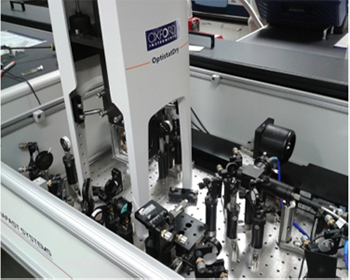
Figure 1. Cryostat in transient absorption set-up.
Flavoproteins occur commonly in nature. The central chromophore in these proteins is either flavin mononucleotide (FMN) or flavin adenine dinucleotide (FAD). These cofactors are fundamental to the function of the proteins, which have a diverse range of functions, including acting as photoreceptors, or more commonly as enzymes. As the motions of a protein become frozen out at very low temperatures only the photochemistry, which does not include movement of atoms, can proceed and hence, studies at cryogenic temperatures can provide an important insight into protein mechanism. An initial step to performing these experiments is to characterise the dynamics of the chomophore at low temperatures using cryogenic transient absorption approaches.
A Ti:sapphire amplifier system (Spectra Physics Solstice Ace) producing 100 fs, 800 nm pulses at 1 kHz was used to drive the broadband ultrafast pump-probe transient absorbance spectrometer ‘Helios’ (Ultrafast systems LLC) which was used to collect data (at random time points) from ~0.2 ps to 2.9 ns. The probe beam consisted of a white light continuum generated in a sapphire crystal and absorbance changes were monitored between 460 and 640 nm. The pump beam, 0.2 nJ at 375 nm, was generated by a portion of the output of the amplifier pumping a Topas Prime OPA with associated NIR UV-Vis unit.
The OptistatDry was set up in the transient absorption enclosure (Figure 1) and the height and position adjusted so that the sample position was at the focus of the pump and probe beams, where they overlapped. The beam diameters at the sample were on the order of 300 µm. Using identical conditions to those in the cryostat a cuvette of solvent was scanned, and the coherent artefacts observed (Figure 2), allowing an estimate of the time resolution of ~470 fs (usually ~250 fs without the cryostat). Flavin mononucleotide was dissolved in a mixture of 50% glycerol, 50% pH7 phosphate buffer and ~800 µl was used to fill a 2 mm pathlength cell with quartz windows.
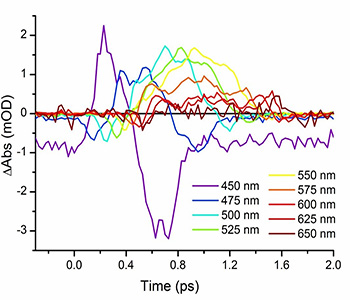
Figure 2. Coherent artefacts in buffer solution in cryostat.
Data collected for a stirred solution of FAD at room temperature (in the cryostat but without the outer front window) and at 10 K are shown in Figures 3 and 4. At room temperature the spectra show the well characterised transient spectral features of FAD, which are a negative feature centred at ~450 nm due to the loss of population of the ground state, a positive feature at ~500 nm due to excited state absorption and a negative feature at ~570 nm resulting from stimulated emission. The same features are present at 10 K, although the intensity is reduced and there is a significant decrease in the stimulated emission feature. The decay kinetics are similar on longer, ns, timescales, but at short times the relaxation occurs much more quickly at 10 K.
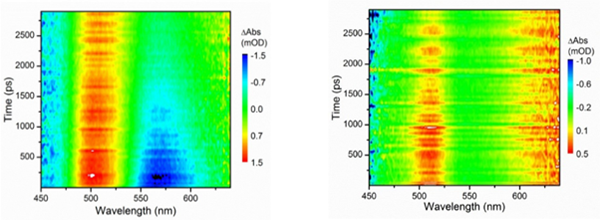
Figure 3. Transient absorption data of FAD after excitation at 375 nm at room temperature and at 10 K. Left: Result at room temperature. Right: Result at 10 K.
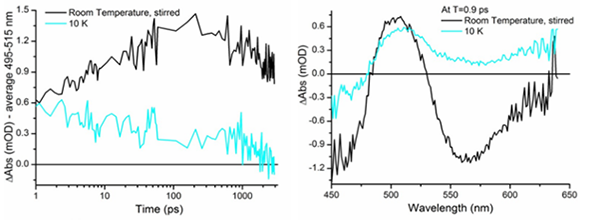
Figure 4. Transient absorption data of FAD after excitation at 375 nm. Left: Kinetics at 495-515 nm. Right: Difference spectra at 0.9 ps after excitation.
Transient absorption spectra were successfully recorded at 10 K for FAD, which showed spectral features and kinetic behaviour that were distinct from those measured at room temperature. Importantly, as these measurements were recorded on a frozen, solid sample no sample damage occurred from the laser pulse continuously irradiating the same spot. This paves the way for future cryogenic measurements of flavoproteins.
The OptistatDry provides a temperature-controlled sample in vacuum measurement environment within a Cryofree cryostat. The OptistatDry comprises a range of compact cryostats with optical access cooled by a closed cycle refrigerator. The system is capable of cooling samples to helium temperatures without the need for liquid cryogens. This provides significant benefits in terms of ease of use and running costs. The system enables optical measurements to be carried out on your samples, as shown in this application note.
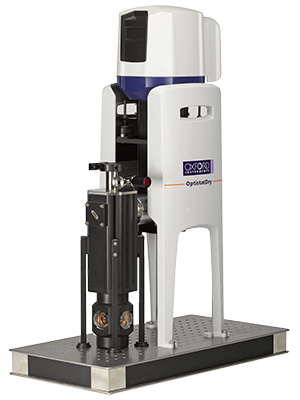
Figure 5: OptistatDry top-loading Cryofree
The Manchester Interdisciplinary Biocentre was completed in 2006 and represented the first university-based, purpose-built interdisciplinary research institute of its kind in the UK.
Focusing on advanced quantitative approaches to specific biotechnology challenges at the interface between medicine and biology and the physical sciences, engineering, mathematics, and computation the MIB enjoys a unique pluralistic and open research culture that is supported by world-class infrastructure. The establishment of multi- skilled interdisciplinary teams with critical mass generates unique capabilities that cannot be realised through virtual associations between PIs or research units to develop regional, national, and international partnerships in biotechnology research
Date: August 2022
Author: Samantha J. O. Hardman & Derren J. Heyes (Manchester Institute of Biotechnology, University of Manchester, UK)
Category: Application Note
